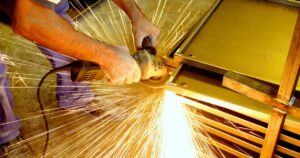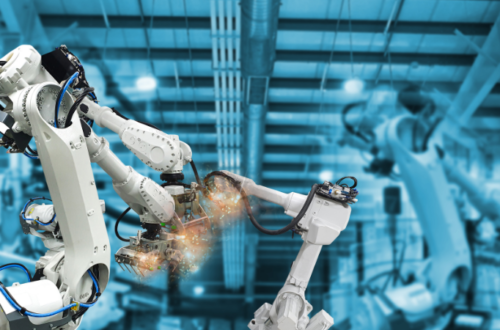Benefits of Metal Fabrication Services in USA for Industries
Metal fabrication services in USA are vital to numerous industries, offering specialized processes to turn raw metal into functional components and structures. These services cater to industries such as construction, automotive, aerospace, and energy, providing high-quality metal products that meet strict specifications. In this article, we will explore the role of metal fabrication USA, the techniques involved, and why they are critical to the success of various sectors.

What Are Metal Fabrication Services?
Metal fabrication involves a wide range of processes that shape and transform raw metal into finished products. These services typically include cutting, bending, welding, machining, and assembling metal materials. The goal is to create parts or structures that serve a specific purpose, whether it’s in machinery, buildings, or consumer products.
The metal fabrication industry in the USA plays a crucial role in the manufacturing ecosystem. Companies offering these services work with various materials such as steel, aluminum, copper, and titanium to produce both simple and complex designs. By utilizing advanced machinery and skilled labor, these companies can create components that meet the exact specifications required by their clients.
Techniques Used in Metal Fabrication Services
There are several key techniques employed by metal fabrication services in USA to shape and assemble metal products:
Cutting:
Cutting is one of the most fundamental metal fabrication techniques. It involves removing sections of metal using various tools such as saws, lasers, or plasma torches. Laser cutting, in particular, is widely used due to its precision and ability to handle complex shapes with minimal waste.
Bending:
Bending is a process where metal sheets are deformed into specific angles or shapes using press brakes or other bending machines. This process is essential for creating curved or angular components, commonly used in architectural structures, automotive parts, and machinery frames.
Welding:
Welding is a critical technique used to join metal pieces together. It involves melting the edges of two metal parts and allowing them to cool, forming a strong bond. Metal fabrication services in USA often rely on welding to assemble large structures like bridges, ships, or industrial machinery. Different types of welding, such as MIG, TIG, and arc welding, are used depending on the materials and application.
Machining:
Machining refers to the process of removing material from a workpiece to achieve the desired shape or size. It is done using various machines like lathes, mills, or CNC (Computer Numerical Control) machines. CNC machining is especially valuable for creating precision parts with tight tolerances, which are often required in industries like aerospace and automotive.
Assembling:
After the individual parts are shaped, they are assembled into a complete product or structure. This can involve bolting, riveting, or welding the parts together, depending on the design and the strength required. Assembly is a critical step that ensures the final product meets the client’s specifications and is ready for use in its intended application.
Industries That Benefit From Metal Fabrication Services
Metal fabrication services in USA cater to a broad range of industries, each with unique requirements and challenges. Some of the key sectors that rely on these services include:
Construction:
The construction industry is one of the largest consumers of metal fabrication services. Steel beams, columns, trusses, and other structural components are fabricated to create buildings, bridges, and infrastructure projects. The precision and strength provided by metal fabrication are crucial for ensuring the safety and durability of construction projects.
Automotive:
In the automotive industry, metal fabrication services are used to produce various components, including frames, exhaust systems, and engine parts. The precision required in automotive manufacturing means that fabricated parts must meet strict quality standards to ensure vehicle safety and performance.
Aerospace:
The aerospace industry demands high-performance components made from specialized metals like titanium and aluminum. These parts must withstand extreme conditions such as high altitudes, intense heat, and pressure. Metal fabrication services in USA play a vital role in producing aircraft parts, such as wings, fuselages, and engine components.
Energy:
The energy sector, including oil, gas, and renewable energy, relies on metal fabrication to create equipment like pipelines, wind turbines, and solar panel frames. Metal fabrication services ensure that these components are durable and capable of withstanding harsh environmental conditions.
The Role of Technology in Metal Fabrication
Advances in technology have significantly enhanced the capabilities of metal fabrication services in USA. The integration of CNC machines, laser cutting, and 3D printing has revolutionized the industry, enabling greater precision, efficiency, and customization.
CNC Machining:
The process in CNC machining is controlled by computers, which ensures consistency across multiple production runs. This technology is particularly valuable for industries that require precision, such as aerospace and medical device manufacturing.
Laser Cutting:
Laser cutting technology has greatly improved the efficiency and accuracy of cutting processes. It allows metal fabricators to cut intricate designs with minimal waste, saving both time and materials. Laser cutting is ideal for applications that require fine detail and a high degree of accuracy.
3D Printing in Metal Fabrication:
While traditionally associated with plastics, 3D printing has made significant strides in metal fabrication. This technology allows for the creation of highly complex metal components with minimal material waste. It is particularly useful for prototyping and small production runs, where traditional fabrication methods may be too costly or time-consuming.
Sustainability in Metal Fabrication
As industries become more focused on sustainability, metal fabrication are adopting greener practices. This includes recycling scrap metal, reducing energy consumption, and using eco-friendly materials.
Conclusion
Metal fabrication services in USA are integral to the success of numerous industries. Through advanced techniques such as cutting, bending, welding, and CNC machining, these services provide high-quality components that meet strict standards of precision and durability. As technology continues to evolve, metal fabrication services are becoming even more efficient, allowing for greater customization and sustainability. Whether it’s for construction, automotive, aerospace, or energy, metal fabrication remains a cornerstone of industrial production in the USA.
FAQ
1. What is metal fabrication?
Metal fabrication is the process of creating metal structures or components by cutting, bending, welding, and assembling metal materials.
2. What industries require metal fabrication services?
Industries such as construction, automotive, aerospace, and energy heavily rely on metal fabrication to produce structural components, machinery, and specialized equipment.
3. How do metal fabrication services in the USA ensure precision?
Most companies use advanced technologies like CNC machines and laser cutting to ensure precision and consistency in the production of metal parts.
4. What materials are commonly used in metal fabrication?
Common materials include steel, aluminum, copper, and stainless steel. The choice depends on the application and the required properties like strength and corrosion resistance.
5. Are custom designs possible with metal fabrication?
Yes, many metal fabrication services offer custom solutions to meet specific project needs, allowing flexibility in size, shape, and material selection.




